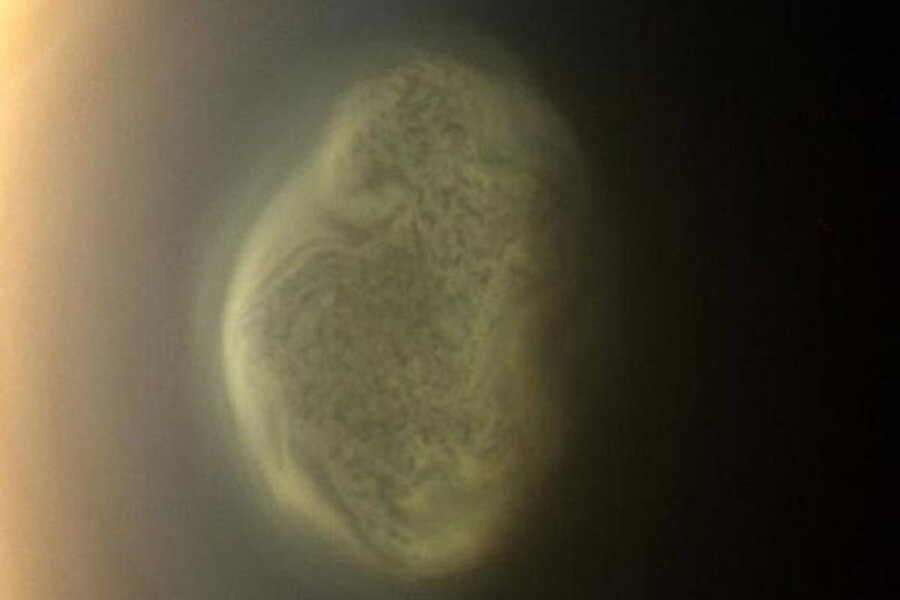Bizarre vortex spotted on Saturn's largest moon
A NASA spacecraft has spied a vortex swirling in the atmosphere high above the south pole of the Saturn moon Titan, hinting that winter may be coming to the huge body's southern reaches.
NASA's Cassini probe photographed the polar vortex — or mass of swirling gas — during a flyby of Titan on June 27. The vortex appears to complete one full rotation in nine hours, while it takes Titan about 16 days to spin once around its axis.
"The structure inside the vortex is reminiscent of the open cellular convection that is often seen over Earth's oceans," Tony Del Genio, a Cassini team member at NASA's Goddard Institute for Space Studies in New York, said in a statement.
"But unlike on Earth, where such layers are just above the surface, this one is at very high altitude, maybe a response of Titan's stratosphere to seasonal cooling as southern winter approaches," he added. "But so soon in the game, we're not sure." [Gallery: Amazing Titan Photos]
When Cassini arrived at the Saturn system in 2004, Titan — which is 3,200 miles (5,150 kilometers) wide — had a vortex and a visible "hood" of relatively dense haze high above its north pole. It was winter there until Saturn's August 2009 equinox, which marked the arrival of spring in the northern hemisphere and fall in the southern reaches of the planet and its many moons.
While Titan's northern hood still remains, the circulation in the upper atmosphere has been moving from the warming north pole to the cooling south, researchers said. This shift appears to be causing downwellings over Titan's south pole, along with the formation of high-altitude haze and a vortex there.
Cassini's cameras first noticed the nascent southern hazes in March, and the spacecraft's visual and infrared mapping spectrometer instrument (VIMS) captured false-color images on May 22 and June 7.
"VIMS has seen a concentration of aerosols forming about 200 miles above the surface of Titan's south pole," said Christophe Sotin, a VIMS team member at NASA's Jet Propulsion Laboratory (JPL) in Pasadena, Calif. "We've never seen aerosols here at this level before, so we know this is something new."
Cassini scientists will keep a close eye on Titan's south pole for further developments, which could shed light on the moon's complex, methane-based weather system.
"Future observations of this feature will provide good tests of dynamical models of the Titan circulation, chemistry, cloud and aerosol processes in the upper atmosphere," said Bob West, Cassini deputy imaging team lead at JPL.
Polar vortices aren't uncommon in our solar system. They've also been observed on Saturn, Jupiter, Neptune, Earth and Venus, researchers said.
Follow SPACE.com on Twitter @Spacedotcom. We're also on Facebook and Google+.
- Saturn's Moon Titan Sports Polar Vortex | Video
- Latest Saturn Photos From NASA's Cassini Orbiter
- The Rings and Moons of Saturn
Copyright 2012 SPACE.com, a TechMediaNetwork company. All rights reserved. This material may not be published, broadcast, rewritten or redistributed.






